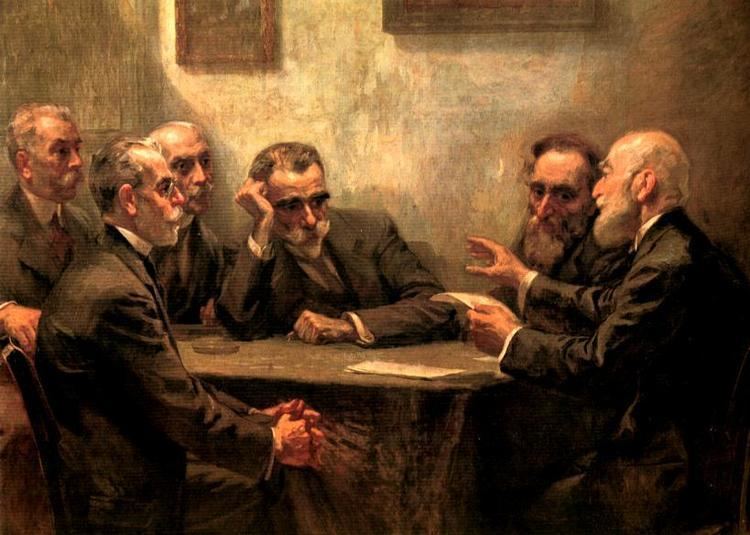 | ||
The term New Athenian School (Greek: Νέα Αθηναϊκή Σχολή), also known as the 1880s Generation (Γενιά του 1880) or the Palamian School (Παλαμική Σχολή) after its leading member Kostis Palamas, denotes the literary production in Athens after 1880. It was a reaction against the First Athenian School and its main aim was the use of Demotic Greek instead of Katharevousa.
Contents
The influence of Palamas led many Greek writers who were using the Katharevousa, like Aristomenis Provelengios and Jean Moréas, to abandon it and adopt the Demotic.
General traits
Some general traits of the school were:
Notable representatives
Notable works
References
New Athenian School Wikipedia(Text) CC BY-SA
